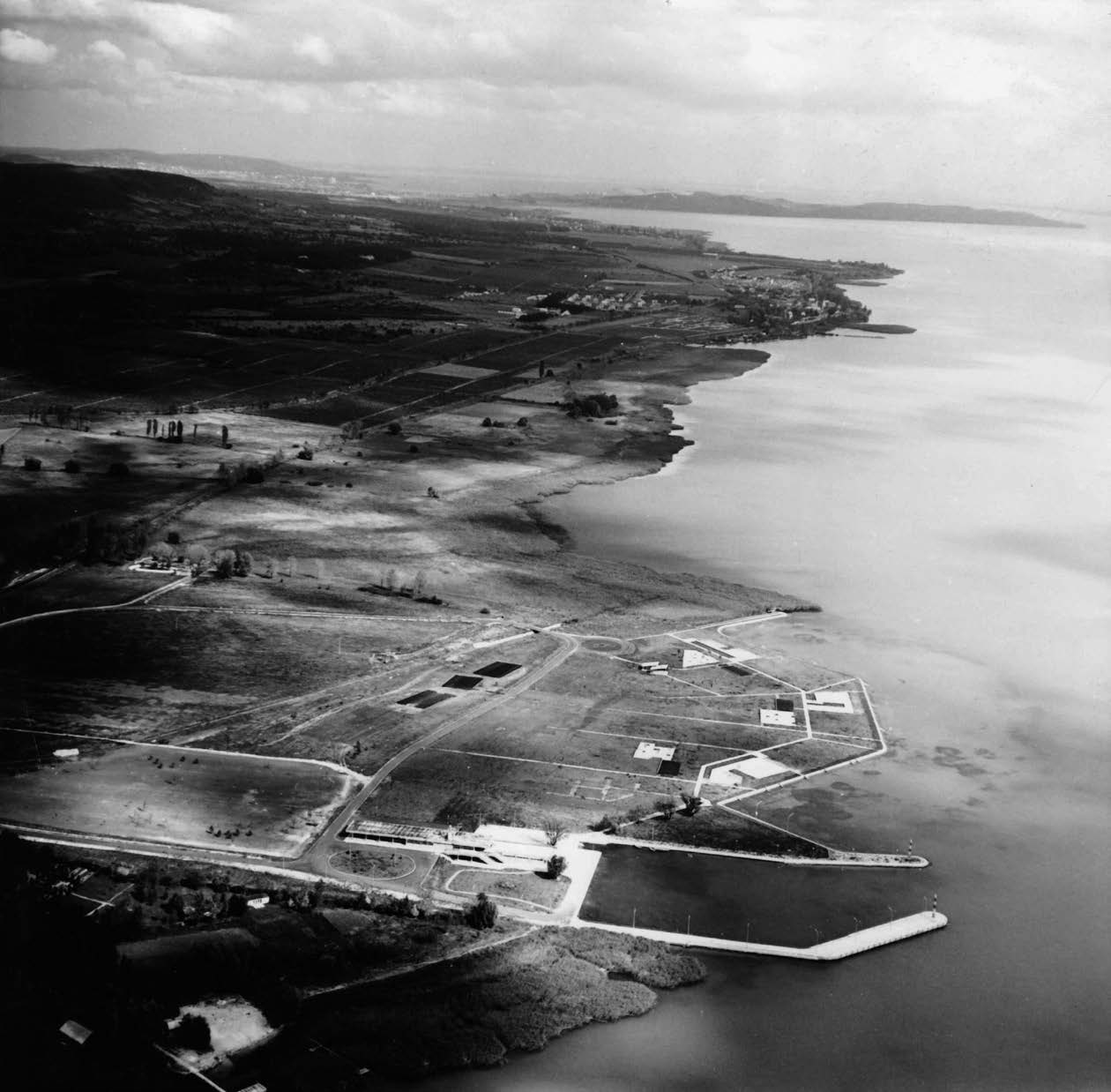BBalaton’s waves brought consolidation in even wider circles” – this quote from the famous lyrics of a song entitled “The Sixties” confirms that the development of the largest lake in CentralEurope had a pivotal role in the social policies intended to reestablish the socialist system in Hungary after the 1956 revolution. In parallel with the social consolidation after 1956, the starting development of the holiday resort opened a unique professional opportunity for architects to deal with regionalscale development alongside regional architecture in the frame of the centralised state system, although the most intensive development phase began only after 1968, in changing political conditions. The quoted text, in fact, expresses the highly ambiguous situation of the period, offering restricted freedom in the framework of socialism, and refers to the different and ambivalent memories in which the common subject is the extended development program around the lake, notonly in the wider public but among architects as well.The development started at the end of the fifties, at the same time as the end of the socialistrealist era, in other words the years during which modern architecture became legitimate. Young architects appearing on the scene after the war faced limited resources, technologies and finances at the beginning of the Balaton development, yet the relaxation of ideological pressure gave them the possibility of inventive formal solutions. A later member of Team X, Károly / Charles Polónyi, the Chief Planner of the south shore, presented the first results as a regional path towards modernism at the Congres Internationaux d’Architecture Moderne (CIAM) in Otterloo in 1959 and six years later these plans won the Union Internationale des Architectes (UIA) Abercrombie Prize.In spite of the prestigious awards achieved by the first phase of the realization, the broader architectural legacy of the Regional Plan and the current situation of the buildings reveal a far more debatable picture. Brie y put, the heterogeneous architectural quality resulting from the long realisation times and the damage to the natural landscape dating from this period, do not re ect the initial planning ideas. …

This work is licensed under a Creative Commons Attribution 4.0 International License.
